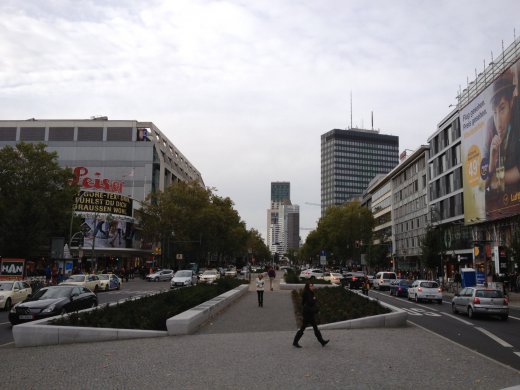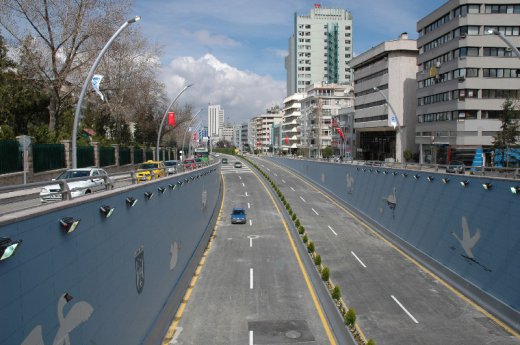A Tale of two Boulevards – Find the seven Differences between the two Images


Picture Source: Trekearth.com
The two photographs above have been taken on two important boulevards in the capitals of Turkey and Germany. The first one shows Kurfürstendamm in Berlin, the second one Ataturk Boulevard in Ankara. Before commenting on these two photos, I would like to touch upon why I have chosen these two boulevards among the dozens of others in both cities.
Historically, both boulevards were built to link the residents of the rulers to their administrative seats in the center of the city. Kurfürstendamm was on the route linking the rulers in Brandenburg to the city palace “Stadtschloss” and the parliament, while Ataturk Boulevard linked the Presidential Palace in Çankaya to the Parliament Building in Ulus. Both boulevards are lined up with monumental buildings, parks, embassies, and both constitute and important part of the cultural and economic life of the city. Interestingly enough, the plan of the Ataturk Boulevard was laid out by a German urban planner called Hermann Jansen.
Although they are worlds apart today, these two avenues looked highly similar a mere 15 years ago. The central pedestrian area in Kurfürstendamm was not there, and the underpasses in Ankara were not yet built. Both boulevards had over 6 lanes, and witnessed occasional traffic jams. The pedestrians on the wide sidewalks of both avenues had to deal with traffic noise and air pollution.
The current states of these once-similar boulevards could not be more different. The middle portion of the Kurfürstendamm was entirely shut to traffic last year and converted into a pedestrian-friendly green plaza. This move was received well by the residents of Berlin, and nobody sued the government for obstructing a main road artery and increasing traffic. Moreover, those who work or reside in this area already have a 100-year-old metro line at their service.
Ataturk Boulevard, on the other hand, witnessed the constructions of two massive underpasses. For this aim, sidewalks were narrowed down to make walking impossible at some points. Interestingly enough, Ataturk Boulevard has more traffic jams than ever, despite these two intersections having initially been built to relieve traffic. Furthermore, the constructions of these two underpasses were frequently protested by the locals, who sued the municipality and got court judgments suspending and cancelling the constructions, ex-post.
The comparison of these two formerly similar boulevards today is striking: on the one side there are wide sidewalks, bicycle roads, public transport lanes, just a single lane for private cars and a large pedestrian area in the center; on the other side there are narrow sidewalks, wide car lanes and a massive underpass in the middle. One side is owned by pedestrians, the other by cars.
In a country with high urbanization rate, it is impossible for us Turks conceive the future of our economy separately from that of our cities. If we are to reach our social and economic goals, we have to realize that we are on the wrong track of urbanization. When we take a look at the two boulevards above, which one utilizes the scant energy resources more efficiently, on which one is it a better idea to open up a store, which one is more convenient for a woman without an automobile to commute to work, and on which one can a family with three children walk around safely and enjoy the nice weather? Which one would you like to live on?
It is necessary to think about these questions while defining the Urban Transformation Project which will drastically change our cities in the coming years.
Ali Sökmen, Research Associate, Economic Studies




